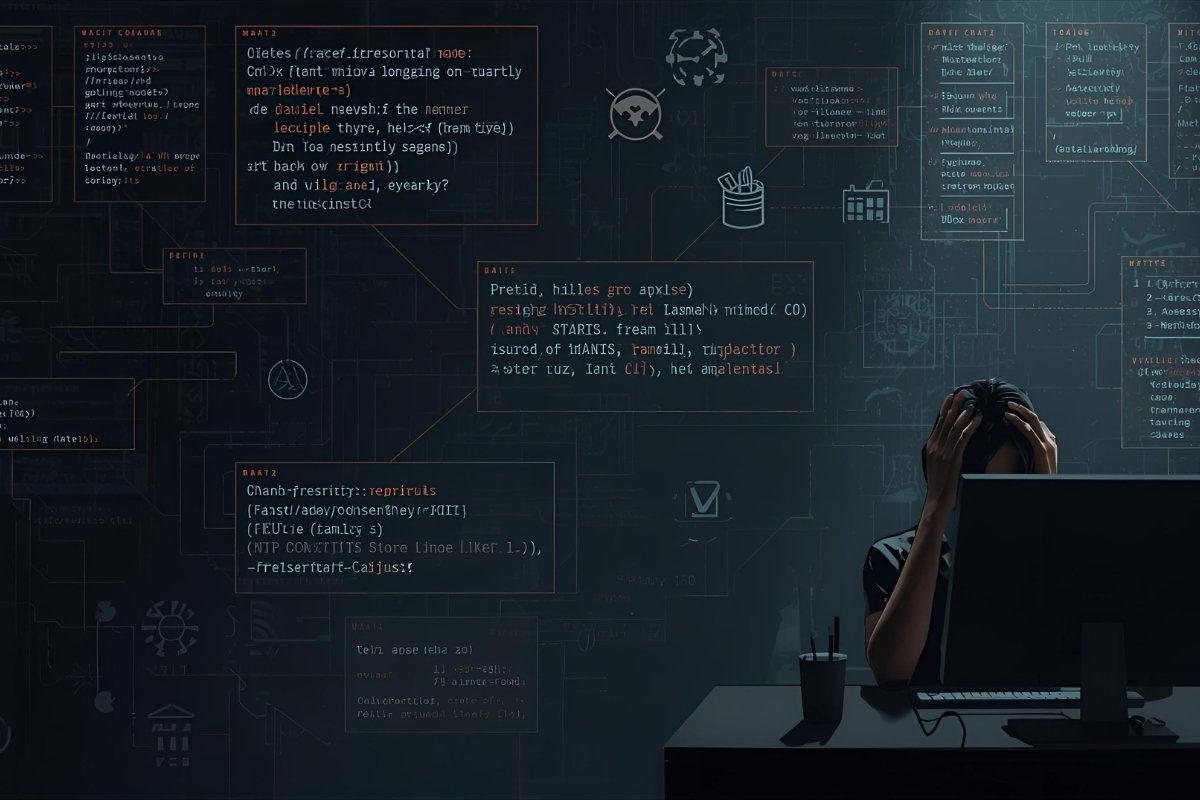
Web3 gaming burst onto the scene, promising a revolutionary future where players would truly own their in-game assets, earn real money while playing, and participate in decentralized virtual economies. Fast forward to today, and the narrative has shifted dramatically. Critics declare the blockchain gaming experiment a spectacular failure, pointing to collapsed projects, plummeting NFT values, and player exodus rates that would make any game developer weep. But is this really the end of Web3 games, or are we simply witnessing the painful growing pains of an industry finding its footing?
The truth, as it often does, lies somewhere between the extremes. While the first wave of crypto games undeniably overpromised and underdelivered, dismissing the entire concept would be premature. The gaming industry has weathered numerous technological revolutions, from arcade cabinets to mobile gaming, each initially dismissed by skeptics before transforming the landscape entirely. Understanding whether Web3 gaming represents a genuine game over or merely the transition to a more sophisticated level two requires examining what went wrong, what’s changing, and where the industry might actually be heading.
The Grand Vision That Never Materialized
When Web3 gaming first captured mainstream attention, the pitch seemed irresistible. Developers and venture capitalists painted vivid pictures of gaming ecosystems where virtual swords and armor could be traded like stocks, where dedicated players could earn legitimate income, and where game economies would operate with the transparency and permanence of blockchain technology. The concept of play-to-earn games became the rallying cry, suggesting that gaming could transcend mere entertainment to become a viable income stream.
The enthusiasm wasn’t entirely unfounded. Blockchain technology theoretically offered solutions to long-standing gaming problems. Traditional games operate as walled gardens where publishers maintain absolute control over digital assets. Spend hundreds of dollars on cosmetics in your favorite game, and those items disappear forever if the servers shut down or you lose access to your account. NFT gaming promised permanence, true ownership, and interoperability—imagine using your favorite character skin across multiple games.
However, the execution fell dramatically short of these lofty ambitions. The first generation of blockchain games prioritized speculation over gameplay, creating experiences that felt less like entertainment and more like poorly disguised investment schemes. Games like Axie Infinity initially succeeded by creating elaborate Ponzi-like structures where early adopters profited handsomely while latecomers bore the financial burden. When the music stopped, as it inevitably did, the entire house of cards collapsed with devastating speed.
Why Early Web3 Games Failed Players
The fundamental problem with first-generation crypto gaming wasn’t the underlying technology—it was the complete misunderstanding of what makes games actually enjoyable. Developers became so enamored with tokenomics, wallet integration, and blockchain mechanics that they forgot the most essential ingredient: fun. Playing these games often felt like a tedious job rather than entertainment, with repetitive clicking, grinding mechanics, and gameplay loops designed to maximize transaction volume rather than player satisfaction.
Decentralized gaming projects also drastically overestimated player interest in ownership mechanics. While the idea of truly owning digital assets sounds appealing in theory, most gamers simply want engaging experiences. They don’t particularly care whether their legendary sword exists on a blockchain or a centralized server—they care about how satisfying it feels to wield that sword in combat. The obsession with financialization transformed games into speculative markets where players treated virtual items as investment vehicles rather than tools for enhancing gameplay.
The technical barriers compounded these issues substantially. Setting up crypto wallets, managing private keys, paying gas fees, and navigating blockchain transactions created friction that alienated mainstream audiences. Gaming should be accessible and immediate; instead, Web3 games demanded that players become amateur cryptocurrency experts before they could even start playing. This fundamental misalignment between user experience expectations and blockchain requirements doomed many projects before they could establish sustainable player bases.
Environmental concerns also plagued the industry’s reputation. Early blockchain networks consumed enormous amounts of energy, and stories about the carbon footprint of NFT minting generated significant backlash. While more efficient consensus mechanisms have since emerged, the initial damage to public perception proved difficult to overcome. Gamers who prided themselves on progressive values found themselves conflicted about participating in an industry associated with environmental destruction.
The Market Collapse and Its Aftermath
The blockchain gaming bubble burst spectacularly throughout 2022 and 2023. Projects that had raised millions in venture capital funding saw their user bases evaporate almost overnight. NFT prices that had reached absurd heights during the speculation frenzy crashed to near-zero values. Games that had promised revolutionary experiences shut down entirely, leaving players with worthless digital assets despite all the rhetoric about permanent ownership and decentralization.
The collapse revealed uncomfortable truths about the industry’s economics. Many play-to-earn models were fundamentally unsustainable, requiring constant influxes of new players to fund rewards for existing participants. This pyramid-like structure could only function during periods of rapid growth; once player acquisition slowed, the entire economy imploded. Developers learned painfully that you cannot build lasting entertainment experiences on purely speculative foundations.
Investment sentiment shifted dramatically as well. Venture capitalists who had eagerly funded anything with “Web3” in the title became suddenly cautious, demanding actual revenue models and player retention metrics rather than flashy whitepapers filled with buzzwords. The days of raising enormous seed rounds based solely on concepts ended abruptly. This market correction, while painful for many projects, ultimately proved necessary for the industry’s maturation.
Level Two: Learning From Failure
Contrary to popular narratives declaring Web3 gaming dead, something interesting has been happening beneath the surface. A second wave of developers has emerged, armed with hard-earned lessons from the first generation’s mistakes. These teams approach blockchain integration with fundamentally different philosophies, treating the technology as a tool to enhance gameplay rather than the core product itself.
Modern crypto games prioritize fun above all else. Developers now understand that blockchain mechanics should operate invisibly in the background, enhancing player experiences without demanding constant attention. Games like Illuvium and Parallel have focused extensively on creating genuinely engaging gameplay loops before layering on blockchain features. This represents a crucial philosophical shift—technology serving entertainment rather than entertainment serving technology.
The economic models have evolved considerably as well. The term “play-to-earn” has largely been abandoned in favor of more nuanced concepts like “play-and-earn” or “play-own-trade.” These frameworks acknowledge that gaming should primarily deliver entertainment value, with economic opportunities emerging organically from engaged player bases rather than being the central attraction. This subtle linguistic shift reflects deeper changes in how developers conceptualize sustainable game economies.
Technical barriers have diminished substantially as well. New blockchain networks designed specifically for gaming offer dramatically faster transaction speeds, negligible fees, and significantly improved user experiences. Layer-2 solutions and sidechains enable blockchain benefits without the friction that plagued earlier projects. Some games have even implemented invisible wallet creation, where players can begin playing immediately without any cryptocurrency knowledge, with blockchain features activating seamlessly in the background.
The Technology is Finally Catching Up to the Vision
One of the most promising developments in decentralized gaming involves genuine interoperability experiments. While the original vision of using the same assets across completely different games remains largely unrealized, meaningful progress has emerged. Consortia of developers are creating shared standards and ecosystems where assets can move between compatible titles, offering glimpses of the interconnected gaming metaverse once promised.
NFT gaming has also matured beyond simple collectibles. Modern implementations focus on utility and functionality rather than pure speculation. In-game items now feature dynamic attributes that evolve based on player actions, creating personalized gaming experiences that genuinely benefit from blockchain’s permanence and transparency. These innovations move beyond simple digital ownership to explore what blockchain technology can uniquely enable in gaming contexts.
The environmental concerns that once plagued the industry have been substantially addressed. Modern blockchain networks utilize proof-of-stake consensus mechanisms that consume a tiny fraction of the energy required by older proof-of-work systems. This transition has removed one of the most significant barriers to mainstream acceptance, allowing developers to focus on gameplay and user experience rather than constantly defending their environmental credentials.
Where Web3 Gaming Might Actually Succeed
The future of blockchain gaming likely lies in areas where the technology offers genuine advantages rather than forced implementations. Digital ownership becomes genuinely valuable in games with robust player-driven economies where crafting, trading, and economic strategy represent core gameplay elements. Games that naturally align with blockchain principles can integrate the technology meaningfully rather than superficially.
Competitive gaming and esports represent another promising frontier. Blockchain technology could enable transparent tournament systems, verifiable achievement records, and revolutionary approaches to sponsorship and prize distribution. These applications leverage blockchain’s strengths—transparency, immutability, and decentralization—in contexts where they provide clear value to players and organizers alike.
Smaller, more focused Web3 games may ultimately prove more successful than ambitious metaverse projects that tried to revolutionize everything simultaneously. Niche titles that serve dedicated communities with specific blockchain features they genuinely value can build sustainable businesses without requiring mass market adoption. This grassroots approach contrasts sharply with the top-down revolution that early projects attempted to force.
The Verdict: Evolution, Not Extinction
So is Web3 gaming truly finished, or merely transforming into something more sustainable? The evidence suggests the latter. While the speculative frenzy has thankfully ended, serious developers continue building genuinely innovative gaming experiences enhanced by blockchain technology. The difference is that these projects embrace humility rather than hubris, focusing on incremental improvements rather than revolutionary promises.
The first wave of crypto gaming failed because it prioritized financial engineering over game design, speculation over entertainment, and hype over substance. These failures were necessary growing pains that revealed what doesn’t work. The emerging second wave has internalized these lessons, approaching blockchain integration with appropriate restraint and player-centric philosophies.
Web3 gaming will likely never replace traditional gaming entirely, and that’s perfectly fine. Instead, it may carve out specific niches where blockchain technology offers genuine advantages. Some players will appreciate true digital ownership and player-driven economies; others will stick with conventional games offering polished experiences without cryptocurrency complications. Both approaches can coexist, serving different audiences with different priorities.
The broken promises of early Web3 gaming hurt the industry’s credibility significantly, and rebuilding trust will require years of delivering actual value rather than speculative promises. However, dismissing the entire concept based solely on first-generation failures would be shortsighted. Gaming has always evolved through experimentation, failure, and refinement. Blockchain gaming deserves the same opportunity to mature beyond its troubled adolescence.
Conclusion
The story of Web3 gaming serves as a cautionary tale about the dangers of hype-driven development and the importance of prioritizing user experience over technological novelty. The first chapter ended in disappointment, with collapsed projects and disillusioned players questioning whether the entire concept had merit. However, declaring game over would be premature. A more measured, thoughtful approach to blockchain gaming is emerging from the ashes of speculation, one that treats technology as a tool rather than a revolution.
The question isn’t whether Web3 games can replace traditional gaming—they probably can’t and shouldn’t try. The real question is whether blockchain technology can enhance specific gaming experiences in meaningful ways that players genuinely value. Early evidence from the industry’s second wave suggests cautious optimism. We’re not witnessing game over; we’re watching developers respawn with valuable experience, ready to tackle level two with hard-earned wisdom. Whether they succeed remains to be seen, but the game is definitely still playing.
FAQs
Q1: Are Web3 games completely dead, or are they still being developed?
Web3 games are far from dead, though the speculative frenzy has ended. Hundreds of blockchain gaming projects continue active development, but with fundamentally different approaches than first-generation titles. Modern developers prioritize gameplay quality over tokenomics, creating entertainment experiences enhanced by blockchain rather than games built primarily around cryptocurrency mechanics. While mainstream attention has diminished, serious studios backed by major publishers are quietly building next-generation titles that may eventually vindicate the technology.
Q2: What were the main reasons first-generation Web3 games failed?
First-generation Web3 games failed primarily because they prioritized financial speculation over fun gameplay. These titles featured tedious mechanics, unsustainable play-to-earn economies, significant technical barriers, and poor user experiences. Developers became obsessed with blockchain integration at the expense of basic game design principles. The Ponzi-like economic models collapsed once new player growth slowed, leaving later participants with worthless assets and creating widespread disillusionment with the entire concept.
Q3: Can blockchain technology actually improve gaming experiences?
Blockchain technology can enhance gaming experiences in specific contexts where its unique properties provide genuine value. True digital ownership matters in games with robust player-driven economies. Transparent, immutable records benefit competitive gaming and achievement systems. Interoperability between compatible games could enable novel experiences. However, blockchain adds complexity and shouldn’t be implemented unless it meaningfully improves player experiences. The technology works best when operating invisibly in the background rather than demanding constant player attention.
Q4: Will mainstream gamers ever accept Web3 games?
Mainstream gamers will accept Web3 games if developers can deliver genuinely fun experiences where blockchain elements enhance rather than detract from gameplay. Current resistance stems from poor first-generation experiences, technical friction, and the perception that crypto gaming exists primarily for speculation. As user experiences improve, transaction fees decrease, and blockchain mechanics become invisible, mainstream acceptance becomes more feasible. However, this requires years of rebuilding trust through consistently delivering value rather than promises.
Q5: What should I look for in a legitimate Web3 gaming project?
Legitimate Web3 gaming projects prioritize gameplay quality and player experience over tokenomics. Look for teams with proven game development experience, playable demos demonstrating actual fun gameplay, sustainable economic models that don’t require constant new player growth, and reasonable claims rather than revolutionary promises. Avoid projects that emphasize investment returns over entertainment value, lack transparent development roadmaps, or require significant upfront financial commitment before you can evaluate the actual game quality.










